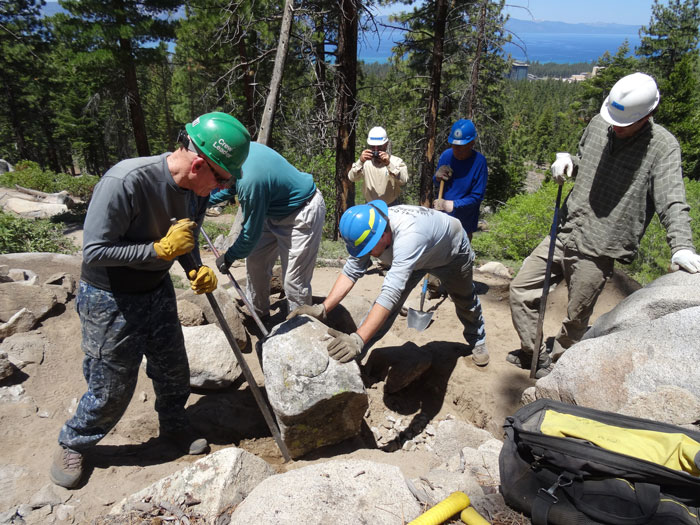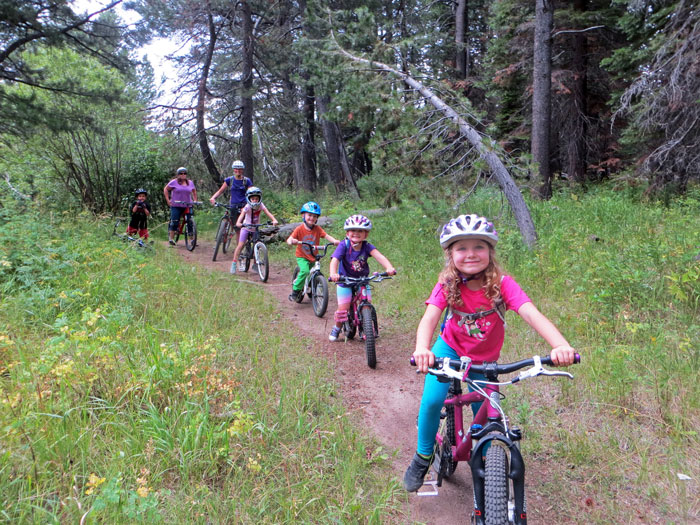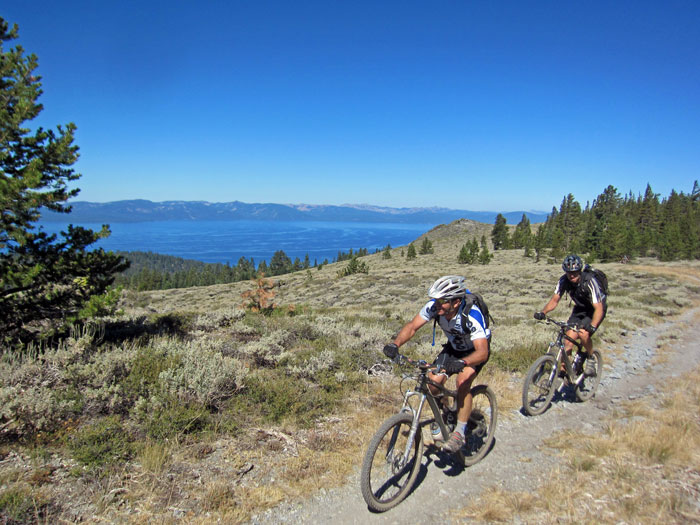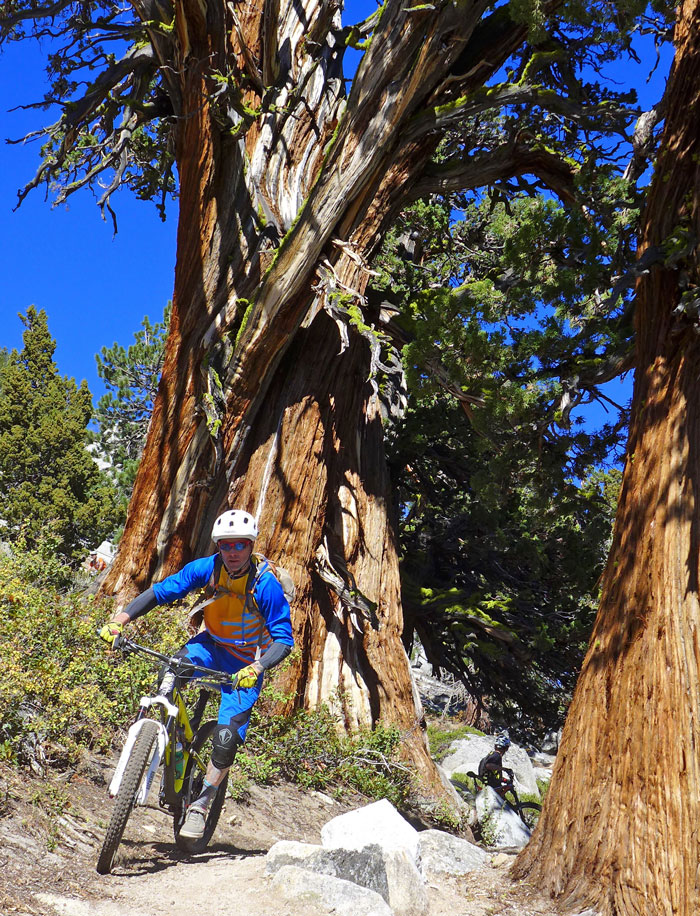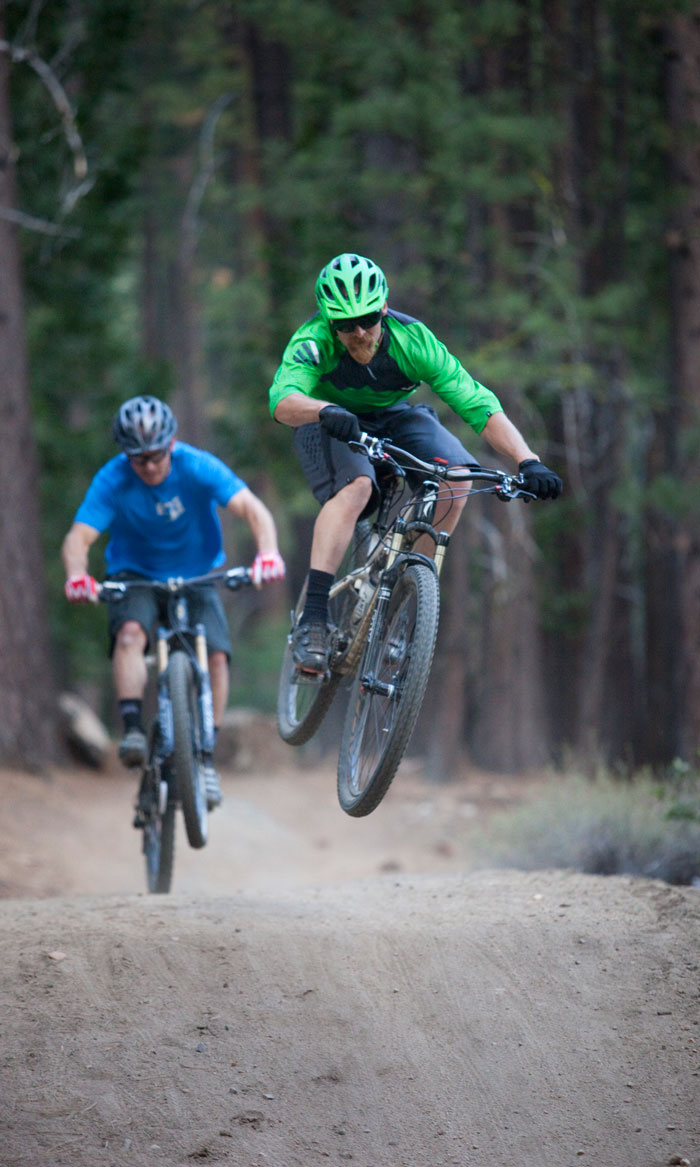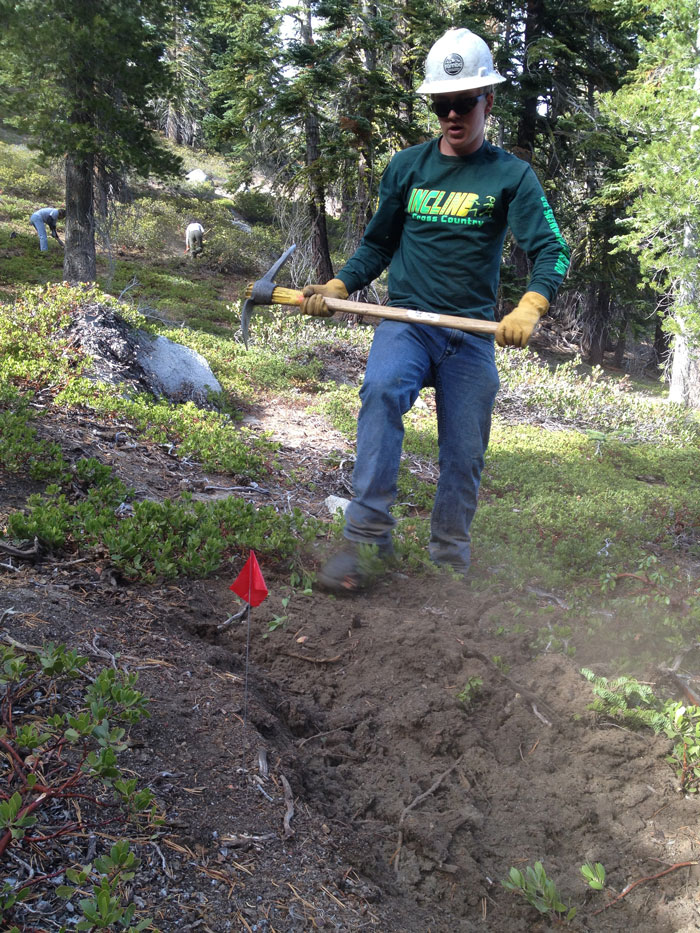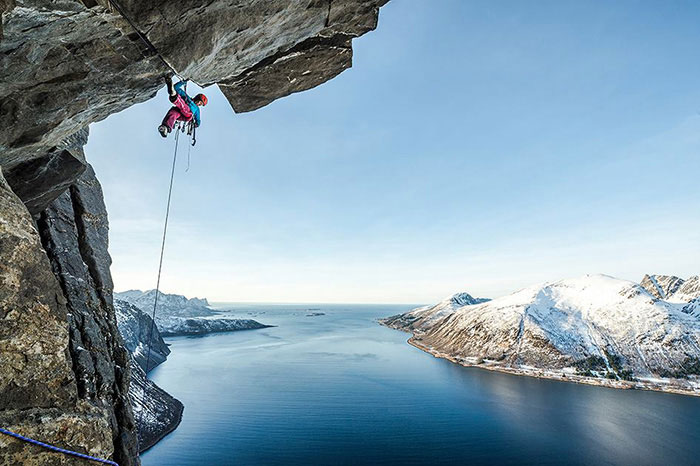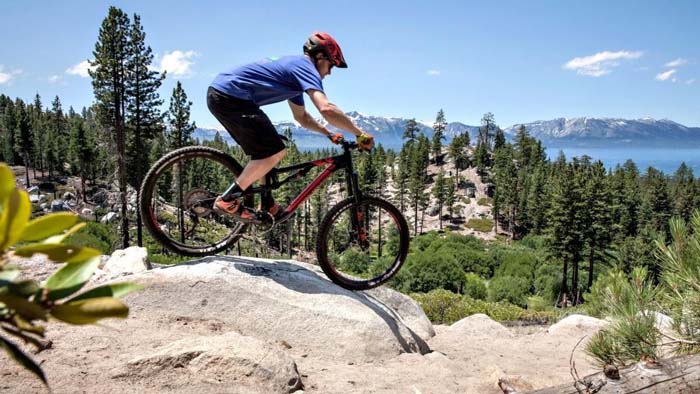- California Enduro Series Announces 2024 Schedule - 11/19/2023
- ASHLAND MOUNTAIN CHALLENGE 2023 – CES RACE REPORT - 10/04/2023
- China Peak Enduro 2023 – CES Race Report - 09/04/2023
Is there a mountain biking trail for everyone?
By Tim Hauserman
Every mountain biker loves to roll along on a beautiful piece of single track, but mountain bike enthusiasts come in a wide variety of ability levels, making one person’s lovely romp through the rocks, a trail to be avoided at all costs by another. Given this wide disparity in ability and desire, imagine being the folks trying to build and maintain the trails to meet the needs of all the riders (and in almost all cases hikers, runners and equestrians as well).
Craig Smith from Olympic Bike Shop in Tahoe City says that Lake Tahoe gets “the full gamut of people renting or repairing bikes, from experienced riders from around the country looking for something challenging and difficult, to those who want to take the family out mountain biking as part of their Tahoe experience.” Then there are the locals: occasional riders out for a relaxing spin, endorphin addicts who are more focused on the uphill grind then the downhill thrill, and the group of bike riding experts who can ride over just about anything.
Garrett Villanueva, who has been building and maintaining trails for the US Forest Service since 1998, says that “the Forest Service has 365 miles of trails that are maintained within the Lake Tahoe Basin. They lie on steep, mountainous terrain with granite and sand. Trails are challenging to say the least. Even our easiest trails may be too difficult for inexperienced users.” The Forest Service, which is where the vast majority of trails in the region are located, also attempts to meet the needs of all the users, including hikers, dog walkers, horse riders and runners. “We don’t go out to build super gnarly trail, the landscape decides the trails.”
In addition to the Forest Service, there are two other major players who actively build and maintain trails in the Tahoe region: The Tahoe Rim Trail Association, which takes care of Tahoe’s 165 mile signature trail that circles the lake, and TAMBA, the Tahoe Area Mountain Biking Association, a volunteer organization dedicated to “stewardship of sustainable multiple use trails.”
Clay Grubb has volunteered thousands of hours building and maintaining the Tahoe Rim Trail. While the Rim Trail in its early years did not allow mountain bikes, now most of the trail is open to bikes (some lies in wilderness areas or has other restrictions). And the master trail builders at the TRTA now design and maintain trail with mountain bikers in mind. They are installing banked turns, and try to make the trails flow. Grubb says, “We build some optional features, and create speed control. We are getting better at putting in steps for different levels of ability.” But the TRT still is a loop around the entire lake that needs to follow a set course, and much of that course goes through ridge top terrain that is rocky and challenging for mountain biking. Grubb says one solution is to “build more beginner and intermediate level trails elsewhere.”
Max Jones, former mountain bike racer, TRTA trail crew leader, and operator of the Flume Trail Shuttle, agrees that there is a probably a big demand in the area for trails that an entire family can ride. He says for example, that “Northstar is missing the boat.” The ski resort has an extensive mountain biking park served by lifts with trails that are primarily either jaw dropping, technical downhills or more placid dirt roads. Jones says, “what people like are twisty, turny, and flowy trails.” Sure, continue to provide trails for riders who like to don gladiator gear and bomb down the fall line, but also create a few long, smooth single track trails that satisfy the intermediate rider, since like skiing, the market is in the middle.
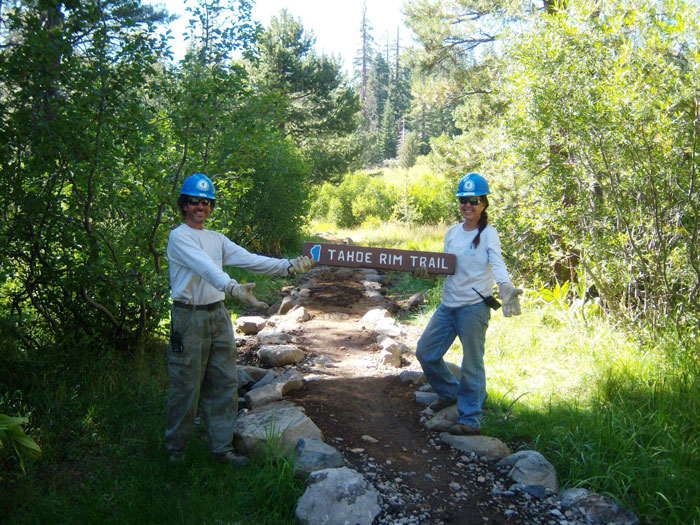
TRTA volunteers work on a raised trail bed section through a riparian area to protect water quality. Photo courtesy of TRT
While in general the Tahoe region has handled the mountain biker-hiker conflict fairly amicably, there are definitely still some Tahoe Rim Trail hikers who after spending their day standing aside while 100 bikers roll by, are not in favor of making the trail any easier to ride. As Jones says “Some have thought if we make it too smooth it will attract too many bike riders. They’d rather leave it rough and unridable.”
TAMBA Trails Director Kevin Joell says, “Everyone has different opinions of what a good trail is, usually most influenced by their riding style and/or bad experiences. Our job as trail stewards is to find that middle ground. To make trails fun to the widest range of abilities; to provide the widest range of trail types within an area; to ensure we protect the land manager and our group(s) from unnecessary risk and liability; and in the Tahoe Basin, to ensure the work we are doing is always providing an improvement to lake clarity. It is not always an easy balance.”
Most trail building and maintenance is now focused on making trails more flowy and smooth, to make them more rideable and more environmentally sustainable. Villanueva says, they are incorporating flow elements on more heavily used trails. “What leads to damage on the trails is excessive speed. We are trying to design trails to consider the speed of the users.” Which can be a challenge since many of the “trails were not designed, they just went there.”
Adding to the challenge is that as mountain biking technology has improved, bikers can boldly go where they could not go before. And so the experts are looking for more and more difficult trails to conquer. In addition, most of those putting in the long hours volunteering to work on the trail are understandably folks who have a passion for riding. These are people with great riding ability who look at a trail and say, “Oh, yeah, I can ride that.” One solution is to have some less skilled riders join the maintenance crew so they can say, “Really? You can ride that?”
The goal for the agencies is to create enough legal trails to meet the needs of everyone. How many trails is enough, and how difficult those trails should be is a continuing question, but a lot of folks are doing their best to provide that solution. In the meantime, perhaps a system of marking and rating trails so that riders know what they are getting into, would be helpful. A green, blue, black system like ski areas would probably be the easiest to understand. Of course the tricky part is deciding who comes up with the ratings.
One place around Tahoe where the desires of many different users has come together is the Burton Creek/Tahoe Cross Country Ski Area network of trails outside of Tahoe City. These trails combine miles of easy to intermediate loops, with a the opportunity for a lot of climbing and more challenging sections as well. The network is so extensive and convoluted, however, that it was easy to get lost. Two years ago, when the Tahoe Cross Country ski area folks opened up a bike rental operation at the base of the trails, they got a grant from the North Tahoe Resort Association to install a series of trail signs and maps at key intersections showing the primary routes. Don’t worry experts, there are still no signs pointing to the most difficult trails. You will have to find those on your own. But the less experienced rider will be able to find their way home.
TAMBA Crew Leader Jake Dore is optimistic about the future. “The trail network in South Lake is getting better and better, and all user groups can enjoy them. We want trails that challenge us, but that we can also take our kids on.”
Tim Hauserman lives in Tahoe City. He wrote the official guidebook to the Tahoe Rim Trail as well as Monsters in the Woods: Backpacking with Children. He has been road and mountain biking around North Lake Tahoe for a long time, and writing this article turned him on to some new riding possibilities on the other side of the lake.


